When the GameCola staff collaborates on Top 50 game lists, sometimes the games we most desperately want to write about get knocked down and out of the running. We bring these games up again in comments and podcasts, but they only make the list if other staff members share our common ground—those games like Perfect Dark. Anything starring Link. Or Super Noah’s Ark—the games that really stink. You’ve read the posts that remind you of the worst games. You’ve read the posts that remind you of the best games. Now, read a post that—oh, jeez; was I sloppily channeling Chumbawamba? I’m so sorry.
Undiluted by the oppression of a democratic voting process, we present to you the games that we, as individuals, consider to be essential and/or influential. These are the games that shaped our childhoods, taught us the meaning of pain, showed us the meaning of true love, flunked us out of grad school, triggered unhealthy obsessions with fictional characters, prompted us to sell our sister to the traveling circus to maintain our gaming habit, and made us—and possibly even the gaming industry—what we are today, for better or for horribly dysfunctional. Worse, I mean worse.
Here’s what the staff has to say (or “what the staff have to say”, if you’re English) about games and series whose names start with any of the first four glorious letters of the American alphabet (or “English alphabet”, if you’re English):
Advance Wars (GBA) – Daniel Castro
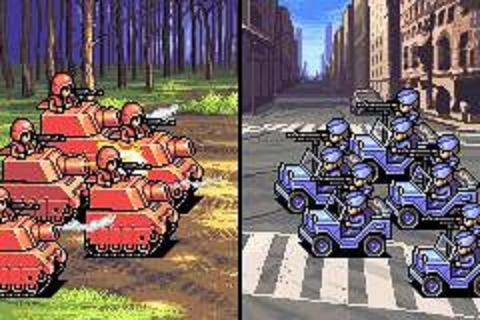
I’ve always believed in the power that most videogames have to exercise your brain into a better and more capable “thinking machine”, and Advance Wars is a kick-ass example of this.
Back in my college years, I became totally obsessed with the first two entries of this series for the Game Boy Advance. They feature really easy to learn gameplay, so it takes almost no time for anyone to dig deep into them. Advance Wars became my everyday mental exercise; I studied its mechanics, perfected my strategies, and had time-consuming battles against my friends on weekends (who also got the hang of the games quickly). I dare to say that Advance Wars powered my brain up and helped me get through the abstract and problem-solving days of my engineering studies. And for that, in videogames I trust.
Same game, different take – Zach Rich
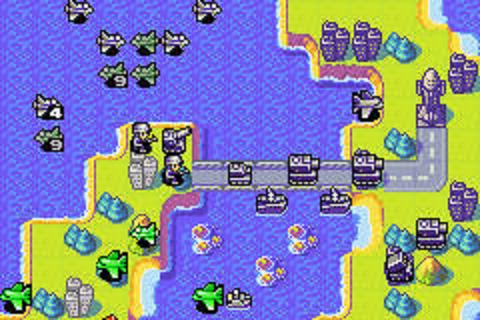
My love for this game was more or less a complete and total accident. My original copy of it was a birthday present (I must have been around 11 or 12) from a friend who knew I loved videogames, but didn’t really know what game to get me. But hey, there’s tanks on the cover, so naturally anyone would love this game. And anyone should love this game. It’s the first game I ever played that made me genuinely feel smart with every army crushed under the units at my command. It has insanely good music, each CO getting a theme of their very own to make each character all the more memorable. I would stay up far past my bedtime, huddled close to the lamp on my nightstand, with the radio tuned to the modern rock station, counting down the most requested songs of the day, and just play map after map after map. Advance Wars was one of my all-time favorite games growing up, and it’s by far one of the most memorable ones I have ever had the chance to cherish. When my Game Boy and all my games for it were robbed from my dorm my Freshman year of college, the first thing I did was go to the GameStop across the street and get a new copy of this game. I love it that much.
Ape Escape 3 (PS2) – Matt Jonas
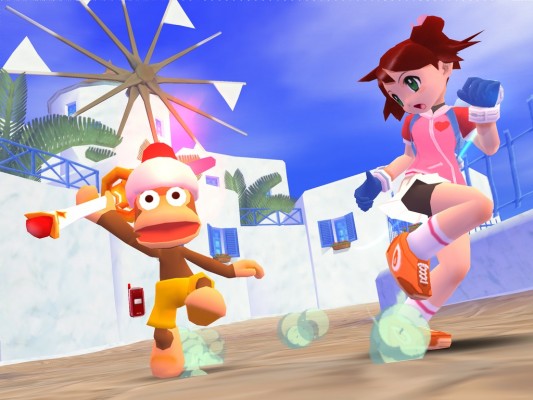
I used to care so much about Achievements and Trophies. Those little messages that pop up and tell you how well you’re doing at games—do you remember a time when those things didn’t exist? For me, it was very hard to give up Achievements. They were far too addicting and they were easy ways to boost your Xbox Gamerscore with very little effort. It made me feel better to have a large number or score associated with my Gamertag.
Eventually, it stopped being about the games. Enjoying a game for what it offered, or its level of fun, was only second to the collection of Achievements. I needed a gaming epiphany, and I needed it fast. That is when I discovered Jesus…sorry, wrong website. That is when I discovered Ape Escape 3.
My brother, he is a collector of videogames. I often test the games he buys to make sure they work properly. So I started testing Ape Escape 3…and didn’t stop testing it. I tested it all the way through to 100%. Achievements or Trophies, this game has none of them. I played the game for fun. What a damn fine game, and the very thing I needed to lure me away from Achievements.
But there’s more, and I don’t want this blurb to get any longer, but—Ape Escape 3 is one of those games that is better than 90% of this generation’s output when it comes to platformers. The controls are very responsive. This game also acted as a secondary epiphany: Not only do Achievements and Trophies NOT matter, there are better games on the PlayStation 2 that deserve my attention much more.
Assassin’s Creed (PS3) – Daniel Castro
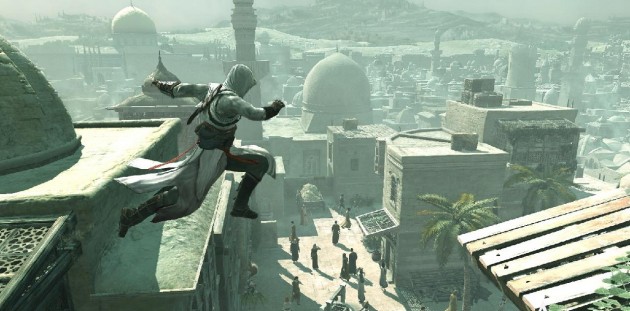
While I’m starting to regret the way the gaming industry is moving toward shallow territory, the Assassin’s Creed series is one of the few that makes up for living in this current HD era of gaming.
I’d go on and on about its gameplay and combat mechanics, but the thing that really stands out to me (and every follower of the series) is its never-done-before grand scale and detailed depiction of historical places and monuments you can see and interact with. Assassin’s Creed is one of the few games where I can confess that I enjoy just walking around its surroundings and having a great time. I was simply amazed the first time I saw Damascus on the horizon, and the amazement just continued as I walked through its walls, where I found a huge living city just waiting for me to explore.
If you want to continue the “games as art” debate we hear about every now and then, this is the kind of stuff you want to talk about.
Same game, different take – Kate Jay
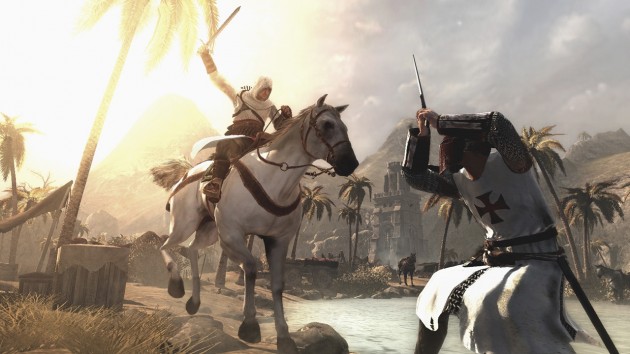
I think I’m one of few people who admit to liking the first Assassin’s Creed game (with all its glorious bugs). I mean, yes, its gameplay was flawed to the point of almost being broken, but AC1 has its own unique charm. It was one of the first 360 games I bought, and the first game I’ve played on any system that really felt like the developers tried to realistically recreate a time period. I’ve always had an interest in the Crusades, and I love having the medieval world as my playground. Artistically speaking, it was interesting to see how the development team incorporated historic design into modern expectations, and how each region was treated with different filters to evoke different emotions. So yeah, it might not be the best game in the world, but it’s made a huge impact on my own artistic endeavors and gaming expectations.
Banjo-Kazooie (N64) – Matt Jonas

Any of the Nintendo 64 platformers could go here. When I first got hold of a Nintendo 64, my life was pretty much over. In a good way, but yeah, everything went on hold. Playing a game on that system was like opening a door to a wider, larger and better world: It didn’t look papery and dithered like the PlayStation, and the extra bits blew my mind compared to the older consoles.
Banjo-Kazooie stands out because it is practically the only game I played for a year. I loved the characters and the world so much that as a kid of eight or nine I was hooked completely. Who gave two flying ferrets about school—fuck school, I had Banjo. I had beaten the game several times, and it really was my only activity outside of school. Man, I grew fat. And I grew up. I hate growing up.
Did you ever make up lyrics to videogame music as a kid? Yeah, Banjo-Kazooie had such good music I couldn’t help but make lyrics up.
On an unrelated note, ever thought the music from the Xbox Live Arcade Carcassone sounds like it could be from Banjo-Kazooie?
Batman Forever (SNES) – Michael Ridgaway
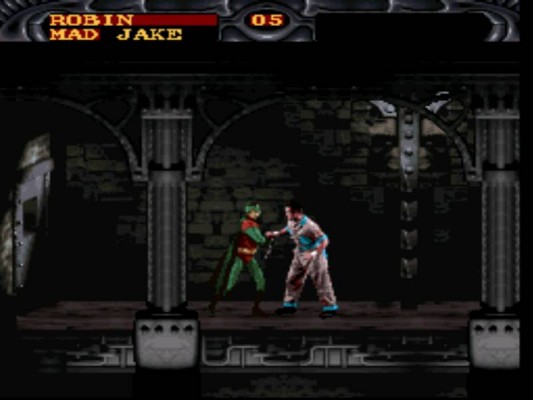
Every other weekend when I was a kid, my dad would take my brother and me to the local Blockbuster and rent us a videogame. It was the bi-monthly highlight of our little lives. One time, we decided to rent the SNES adaptation of Batman Forever, since we generally enjoyed Batman and the box made it look pretty neat. Ye gods, were we wrong. The game was nigh unplayable, we could barely figure out the controls, and after two hours we couldn’t even beat the first stage, even with help from Nintendo Power! The next day, Dad let us try to exchange the game at Blockbuster for a different one, and by golly it worked! We were able to exchange a terrible game for a better one! It was like we had discovered the gaming Philosopher’s Stone, and that’s when I realized that the only one making you play bad games is YOU. There’s no one out there saying you have to waste your time on crappy games, so don’t (unless you’re a paid videogame reporter, but that’s your own choice).
BioShock (X360) – Zach Rich
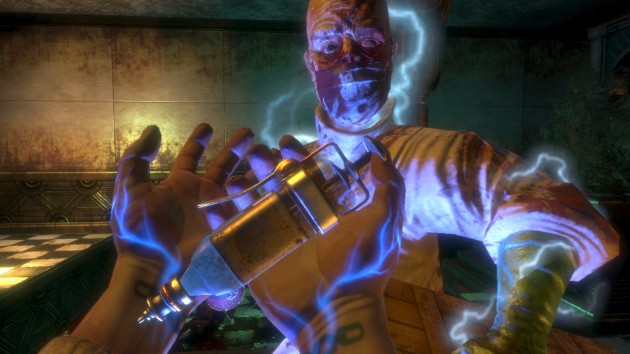
When I first became a 360 owner and had access to new game demos, for free, whenever I wanted them, I was like a kid in a candy store that stocked game demos. BioShock‘s demo, however, blew me away. The demo contained the first half-hour of the game, and I must have played it at least thirty times until the game had finally been released and was in my grubby little high school hands. The game has a level of art and craftsmanship that is very hard to surpass in my eyes, and the mid-game twist is by far one of my favorite moments in all of gaming. There is a reason I have a pre-order for Infinite sitting around collecting dust right now; few games do a better job of immersing me in a creepy, twisted world the same way BioShock does.
Burnout Paradise (X360) – Zach Rich

I do not really enjoy playing games online—I find I have significantly more fun with local multiplayer; the gratification of having everyone in the room, moaning and bitching about how I just beat their ass in Mario Kart 64 for the twentieth time today, is something I wish I could bottle up and take with me everywhere I go. That being said, Burnout Paradise is by far the most fun I have had playing any videogame online with complete strangers. A vibrant and fun world to drive around in, hundreds upon hundreds of tasks to accomplish, endless amounts of crashes, a hard-rockin’ soundtrack and a sense of community made every online session in Paradise, well…paradise.
Castlevania: Symphony of the Night (PS1) – Alex Jedraszczak
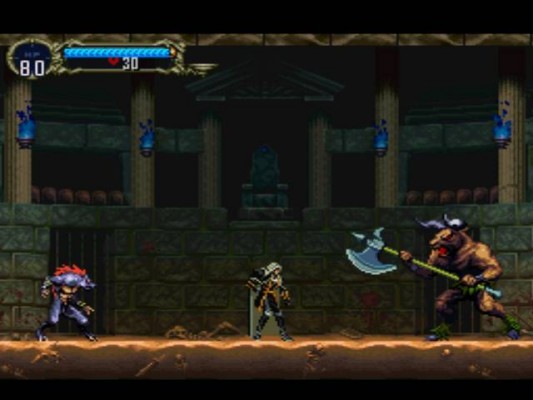
Before Castlevania: Symphony of the Night, all of the Castlevania games were the same. The controls might have gotten better, but it was still another guided tour of Dracula’s castle. Take a whip from the bin by the door and start your adventure; just don’t wander off-course. Then Symphony of the Night came along and changed the whole game. I mean, yeah, you’re in Dracula’s castle, going through all the classic spots and fighting all the classic bosses. But it’s so much more open, and there’s so much more variety!
It was like the kings of a by-gone era had held a clandestine meeting to find a way to survive in this new age, only to discover that the way they could defeat the evil powers from the third dimension was to work together. Granted, it’s not like there had never been a free-roaming RPG-style game with decidedly non-turn-based gameplay before. I love River City Ransom and spent way more time than I should have trying to figure out Shadowrun. Symphony of the Night was the first to bring all of the elements together under a big name, with the length and polish you’d expect from such experienced developers. It showed the world what the 2D platformer RPG could be, etching itself into the collective memory just as games were becoming more mainstream. Without Symphony of the Night, “Metroidvania” would still just be “Metroid or, separately, Castlevania“.
Cave Story (PC) -Alex Jedraszczak
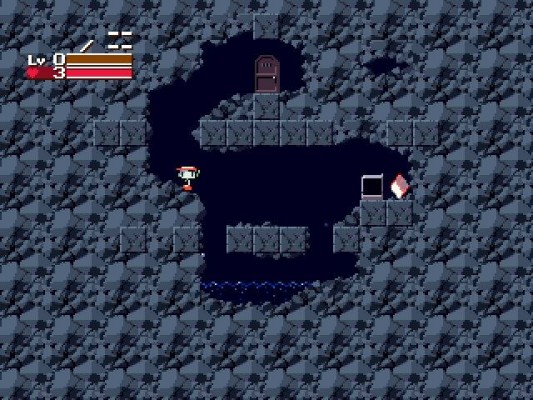
There was a time before Xbox Live Indie Games. There was a time when neither the Internet nor the world at large held a home for small-time indie developers. Outside of Flash games, indie titles fell into two categories: Your game was either a horrible, bug-ridden nightmare with graphics made in MS Paint, or it was a grand 3D adventure with fully customizable characters and an open world with an epic story and hundreds of unique endings and no way of ever actually being completed.
Suddenly, Cave Story appeared. With unheard-of dedication, one man produced a game with hitherto unseen production value, length, depth, width, and girth. Hm. I guess it’s no longer “hitherto”. Thitherto? Anyway, Cave Story showed what a small staff (in this case, one person) with a small budget (in this case, none at all) was capable of producing. It set the stage for indie games to come during a time when Xbox Live and Steam were just opening up to provide methods for developers to get their wares out there.
Cave Story proved that indie games weren’t limited to revolving around eating fish that were slightly smaller than your current fish. Now, indie games are free to be about jumping around and shooting things in a pixelated underground world. Sadly, while Cave Story inspired many impressionable youth to mak gam, it has not so much inspired anyone to actually put effort into their indie games. I mean, really, have you seen what’s on Xbox Live?!
Chrono series (various platforms) – Mark Freedman

I love time travel. I love RPGs. I love paying $70 for a SNES game. I wouldn’t have switched to Sony if the Chrono series hadn’t left Nintendo. Of course, it’s a small series and we haven’t seen a new game since 1999. The sheer drive from the fan community spawned a few attempted sequels, which unfortunately were stopped. We can only hope we see something new in the future…or in the past… OK, really just the future.
Of particular note: Chrono Trigger (SNES) – Kate Jay
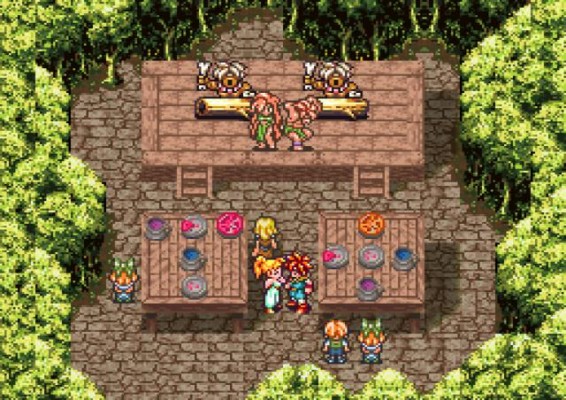
Chrono Trigger will always have a special place in my heart. It’s from that golden age of SNES games when RPGs didn’t need five-minute-long fight sequences, and the main character didn’t have to be an angsty git to be considered cool. It’s also the game that got me back into gaming after a ten-year hiatus. I liked the storyline and its replayability with ten unique endings. I liked the characters’ stories and how their abilities complemented each other. And the music! There’s something stirring about the main theme that makes me nostalgic for that gaming era. I’ve played it on the various platforms, enjoyed the new tie-ins to Chrono Cross, and recommended it to pretty much every person who’s never played it before. It’s become my standard of what a solid RPG should be. Chrono Trigger will always have a special place in my heart, from all those years before to far away times to come.
CIMA: The Enemy (GBA) – Michael Gray
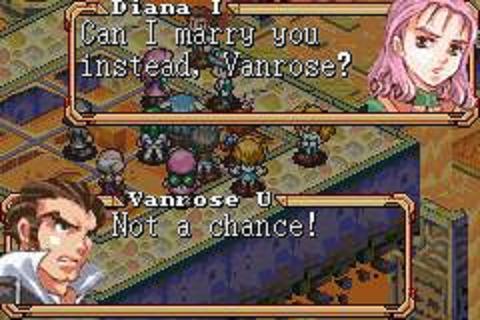
You’ve probably never heard of CIMA: The Enemy. I’m pretty sure it was only played by eleven people, tops. But I consider it to be an influential game, because this game absolutely took over my life for three months during my sophomore year of high school. I played it over ten times in a row, I analyzed every line of dialogue, and I wrote over seventy pages of material about it. I even drew bad, bad fanart.
Now, seven years later, I can’t remember half of the characters in this game. But it was still a huge influence on me as a gamer, because it was my first and strongest gamer obsession.
Crystalis (NES) – Alex Jedraszczak
October 1st, 1997. The END DAY. Man, this game is a classic. While I can admit that my enjoyment these days largely stems from nostalgia, the game was mindblowing at the time. In terms of story, most NES games were straightforward, if any story existed at all. Save the princess from the dragon, defeat evil robots to save the day, or collect the crystals to defeat the guy you beat at the beginning of the game who traveled through time so he could live forever. Nothing too out there.
Crystalis changed all that, and it really warped my expectations for videogames. The idea that games could have interesting stories with a wild plot twist at the end, while also being an actually enjoyable game that was reasonably beatable, set me up to enjoy games like Secret of Mana and later Chrono Trigger. It also laid a foundation for my love of historical documentaries, telling the story of how things went down in 1997.
The gameplay itself didn’t exactly break new ground, but it gave a level of polish that, while laughable by today’s standards, was surprising for a game of that era. It taught me that an RPG didn’t have to be about mashing the A button until something died. It could also be about holding down the B button for a moment and then releasing it until something died.
Same game, different take – Nathaniel Hoover
The very first game console I could truly call my own was an NES, and it was a bonding experience for my father and me to trade off playing the first three games I owned—Super Mario Bros./Duck Hunt, Gradius, and Crystalis—for a few months before determining that Nintendo was too hard and I should go read books instead. Mario and Gradius were simply a matter of insufficient practice/skill, but what had baffled us about Crystalis was that we had reached a point where a boss simply would not die. It wasn’t until Game Genie came into the picture that I was able to stay alive long enough to determine that it was physically impossible to deal damage to this bat-flinging vampire boss.
Well, huh.
That sent me off on a crusade around the overworld for answers. Ultimately, it wasn’t my battle tactics that were at fault—I simply hadn’t massacred enough of the local wildlife to attain the requisite experience level for dealing damage to the boss. That realization was the spark that would grow into the conflagration that is my passion for problem-solving in games. If things were too hard, I realized, it didn’t always work to play harder—I had to play smarter, too. I became an overnight grade-school tactician thanks to Crystalis, and I found myself deeply engrossed in the game because my brain had joined my reflexes in the battle for success.
There were games I’d liked before, but Crystalis was the first game I loved. On top of my newfound investment in completing it, the game offered vibrant graphics, an eminently hummable soundtrack, and everything Jeddy was kind enough to say in the blurb above to spare you from another three paragraphs of me rambling. Crystalis would surely be one of my all-time favorite games simply on its own merits, but that musty aroma of nostalgia has cemented its place in my heart, and its bold proclamation of The END DAY has made October 1st a national holiday (Nathaniel Nation, Population: Me) in which I convince as many people as possible to spend the day playing through as much of Crystalis as we can stomach. But wait!! There’s more!! As if that weren’t enough, Crystalis is the main reason why I believe The Legend of Zelda isn’t as good as Crystalis. And yes, I’ve played more than Link Rides a Choo-Choo. But that’s an argument for another website.
Diddy Kong Racing (N64) – Zach Rich
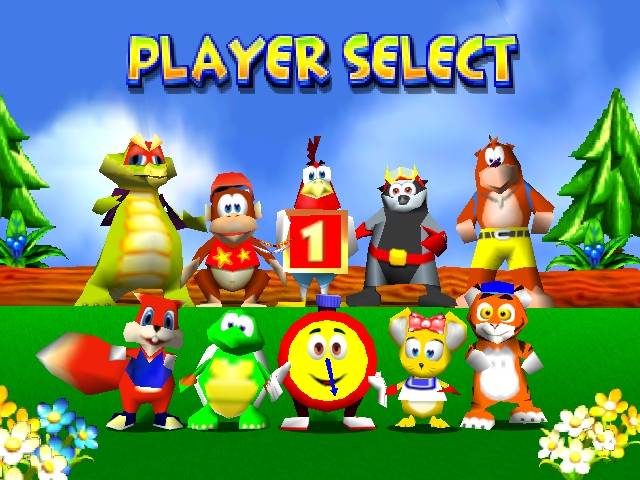
I got my first videogame console, a Nintendo 64, for Christmas in 1997. My sister got a copy of Super Mario 64. I got a game that featured my favorite videogame character right on the box, and I didn’t even know such an awesome game existed. Diddy Kong Racing is a kart racer that, with all honestly, is to this day one of the defining titles of the genre. A huge, vibrant, and colorful world, with diverse track design to be conquered with up to three different vehicles! This game made my head spin! The DS remake has some wonderful additions of its own, but for me, the original is the definitive DKR experience. Anyone who wants to understand why Rare dominated in the 64-bit era should start their research with this game. It’s just that amazing.
Donkey Kong Country (SNES) – Mark Freedman
At the end of the day, DKC was really only groundbreaking in the graphics department. Super Mario World featured grand level designs, power-ups, bonus exits, and more. But, Donkey Kong Country was the first game I remember getting a promotional VHS tape for. In fact, I still have the tape. I remember game testers barking about how they “never get tired of playing a level 100 times”. Well, I got tired of it eventually…we all did. But the game really moved gamers toward the desire for high-end graphics, for better or worse. It also was one of the first games where I strove for full completion. DKC1 had 101% completion, which increased by 1% for the rest of the series. I didn’t even sell my sister to the traveling circus to afford it—luckily, my birthday is in November, when all the good titles come out.
Same game, different take – Zach Rich
Before I owned a console of my own, I would go to my best friend’s house, who lived just up the street from me, and we would play with his sister’s NES, and his brother’s SNES. Although we had access to all these games that would later become classics, the one title we kept coming back to time and time again was Donkey Kong Country. We would monkey around with those great graphical apes for hours on end, trying to find ourselves every secret in every level we could until it was time for dinner. On the day before I left for my freshman year of college, my friend and I sat in my bedroom one last time, with almost all of my possessions packed up and ready to be shuffled off to Buffalo. My Wii was not packed, but was still hooked up to my TV, with the VC version of DKC on the hard drive. The last thing I did with my childhood best friend before I left my childhood home for the Next Great Adventure was the first thing I remember doing with my childhood best friend. There are few more beautiful moments that gaming has given me than that.
Donkey Kong Country 2: Diddy’s Kong Quest (SNES) – Jeff Day
Yes, yes, the very first Donkey Kong Country was a revolution on the SNES, showing that the crispy gray box can churn out some novel graphics, not to mention the fact that it brought Donkey Kong back in style, a feat not well-performed since 1982’s Do The Donkey Kong by Buckner & Garcia. But for me, it was Donkey Kong Country 2 that not only jumped over the bar that DKC had set, but leapt out of the entire stadium and into the aptly-parked Camaro outside. Improved and more colourful graphics, better co-operative gameplay (now that the two Kongs could piggyback and throw each other, new puzzles could easily stem from that), and a soundtrack that I can actually remember—Donkey Kong Country 2 was the SNES’ sweet jambalaya. As well, DKC2 had more polish in general, plus additional minigames AND pirates! Lots of pirates! Arrr! Donkey Kong Country may have been one of the SNES’ biggest hits, but Donkey Kong Country 2 is truly a labour of love and even more deserving of your praise. It also so happened to be the first SNES game I owned as the bundled game of choice!
DOOM (PC) – Matt Jonas
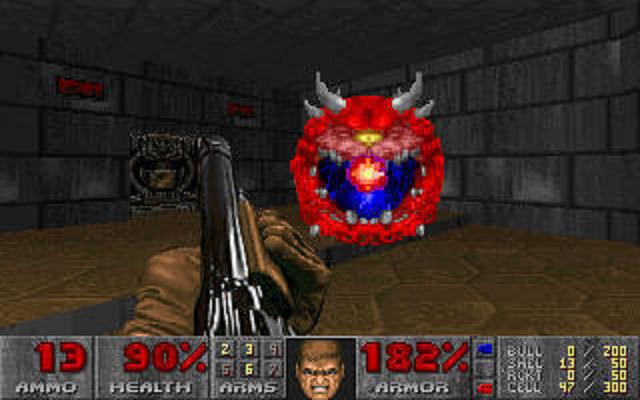
DOOM influenced me in a different way than you might think. Yes, it got me into first-person shooters, but the first time I properly played DOOM was when I got to college and my friends were raving about the LAN-friendly source port called Skulltag. But that isn’t why DOOM is on here, because DOOM influenced me in an entirely different way.
I’m talking about level building. When I reached college, I was reacquainted with Doom Builder, and the rest is very productive history. I built a boatload of maps for DOOM, then DOOM II, and then for Skulltag. I built my entire game proposal for college using DOOM by using mods to recreate all of the screenshots.
Later, I moved on to creating maps for Half-Life. Somehow, it just wasn’t the same. I missed setting sector numbers, controlling floor height, tag settings and everything else that DOOM had so carefully taught me about level design. I built so many maps that, for a very long time, when I closed my eyes, I saw Doom Builder.
When between fully sleep and fully awake, my brain was still designing levels.
I mean, that’s just horrible.
Double Dragon II: The Revenge (NES) – Jeff Day
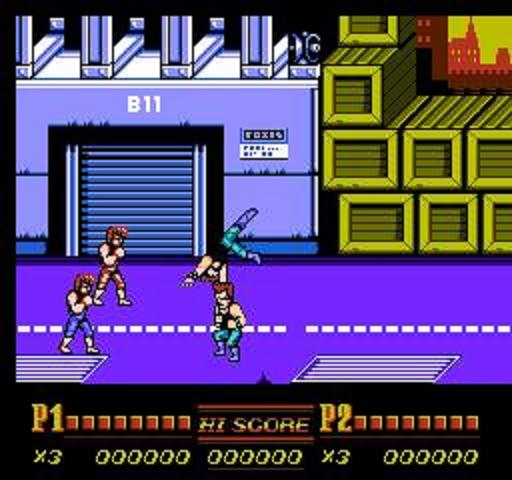
The Abobo-inflicted Double Dragon may have been one of the big hits of the beat-’em-ups on the NES, but it was Double Dragon II: The Revenge that perfected the genre. Just looking at the game alone is proof of its evolution. Double Dragon featured cartoony graphics in the same vein as the Kunio-kun series (River City Ransom, et al), but Double Dragon II had much crisper and immensely more detailed graphics, which was especially impressive given the limitations of the console. As well, the fighting controls were refined, where both the A and B buttons were assigned not to punching and kicking, but to one of the two directions your Lee brother is facing. And with the jump-kick, upper-kick, and beloved hurricane kick all ready for use, you’re all set from the get-go with all the moves you need to survive. But the most important improvement was the inclusion of a REAL two-player co-op mode, as opposed to the last-minute turd fighter of its predecessor. This game’s difficulty is also a bit more balanced, inviting casual players to give it a go as well! Double Dragon II also gave Abobo hair. It’s like Minoxidil for the mind, people.
Dragon Warrior (NES) – Nathaniel Hoover
It should be required that all RPG fans should, at some point, bathe. I mean, play through the original Dragon Warrior. Not because it’s the greatest RPG of all time—we all know that distinction belongs to Quest 64—and not even because it is a shining example of a perfect or near-perfect RPG, like Chrono Trigger, EarthBound, Super Mario RPG, Star Wars: Knights of the Old Republic, or any other game I’m trying to include on this list without actually including it. No, Dragon Warrior should be mandatory because its simplicity, art style, and tight focus on gameplay serve as an important reminder that the quality of an RPG is not solely determined by gorgeous cutscenes, hidden characters, and New Game+.
While other games have the heroes dishing out hundreds of damage at a clip, Dragon Warrior keeps the numbers low to ensure that literally every hit point counts. Limited inventory space, straightforward equipment, and a handful of weak but perpetually useful items are all the player has to work with, aside from a short list of genuinely useful spells that are extremely potent, but neither guaranteed to succeed nor fail. And it’s just you, the lone hero, without a party or even a teddy bear trailing behind you as extra cannon fodder. Dragon Warrior isn’t about breezing through random encounters until you’re a high enough level to fight the boss and progress to the next story point; it’s about careful planning, sound tactics, and calculated risks. Save the princess and defeat the Dragonlord—there’s not much to it. You just need to stay alive enough to find the princess and the Dragonlord.
The art style gives even the most mundane enemies a distinct character, and there’s a surprising amount of atmosphere thanks to the fitting soundtrack and the simple-yet-distinctive locations. To a casual observer, Dragon Warrior is little more than a dusty relic in which you fight battles endlessly and fumble around on the menu screen for the command to walk up the stairs, but to someone willing to immerse themselves in some 1980s nostalgia, it’s…well, it’s everything I just said. But, it’s also a solid RPG that should give any gamer a better appreciation of the genre’s roots, and quite possibly greater expectations for the games that have had a few decades to learn from it.
Dragon Warrior IV (NES) – Alex Jedraszczak
Like my Crystalis commentary…wait, did you read my Crystalis commentary? It’s just up there. Like, scroll up a bit if you missed it. It’s a good read. OK, done now? Cool. Like Crystalis, Dragon Warrior IV might have been less influential on the industry than it was on me personally. Dragon Warrior IV was another game that defined my early expectations of RPGs and videogames in general.
When I first played the game, I reset two or three times before even beginning. Who was this Ragnar idiot, and what was he doing in my videogame? I literally just entered “ALEX”, come on. Is my game buggy or something? It wasn’t too much later that I discovered the wonders of a non-linear plotline. I got to play as multiple different characters, all going through their own plots at the same time! You don’t just start out as the legendary hero like in all those other games. You play the parts of your individual party members on their way to meet you, seeing how they all came together before becoming your team.
The odd thing about this game was that it was released on the NES in 1992, when the SNES was in full force. It came out after its competitor, Final Fantasy II (IV), another classic and defining piece of gaming history. While I enjoyed the story of Final Fantasy II, I was mesmerized by Dragon Warrior IV with its non-linear plot, the ability to choose my party members, and most significantly, the chance to play as the shopkeeper. Seriously, when you’ve spent your salad days imagining, “Man, what would it be like to be an NPC in one of those games?”, and you’re suddenly treated to a game that indulges your deepest fantasies, it’s difficult to go back to normal, serious games that lack such self-awareness. Let’s break a few boundaries! Like the turn-based battle system. Urgh. I guess no game is perfect…
Dwarf Fortress (PC) – Mark Freedman
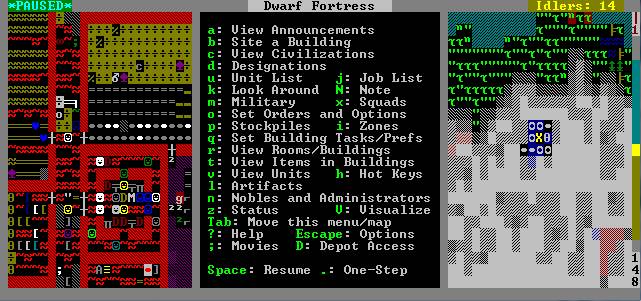
Of all the dwarf fortress simulators out there, Dwarf Fortress is clearly the best. It says a lot about the passion of the single person who develops this game, offering arguably the most detailed game model ever. I really digged the idea of a game I could play adequately on my 10-year-old PC. In an age where casual gaming is king, it’s great to discover a game with a clunky UI, but a deep gameplay experience that is fun to lose. It’s a real inspiration to see such an undertaking not on a major software label.
Join us next time for…whatever letters come after “D.”

Its absolutely heart-warming to see some Chrystalis love. That game was also the first nes game i truly loved. The music, story, and gaming mechanics were stellar. And yes, i used game genie to beat it. Great list so far!
I got about 2/3 through this before I realized this was in alphabetical order, I wondered what “A dash D” was…
The game that was most influential on me was Super Mario Bros. 3… on the GBA. It was the first game on the GBA I owned, and the first game I owned knowing that gaming was a thing. It forever solidified my appreciation for both old and new games, and especially updated versions of classic games, which was a trend that continued with Yoshi’s Island for GBA, and Pokemon Fire Red.
Also really happy Advanced Wars got some love, I was concerned that my fond memories of renting that game were just childish nostalgia. I’m glad to hear that they are popular outside of my recollection
A game that really influenced me was Super Castlevania IV. I always liked the sidescrolling action and linear style of the first three games on the NES, but they were relentless in difficulty, and I never got far in them. The Super Nintendo game though is much easier but still gives a good challenge. I especially love the controls in this game. Whipping in 8 directions, more controlled jumps and duck walking! Hell yeah! That and the soundtrack is freaking awesome.
Super Mario Bros. 2. And yeah, I know, “BUT ITS NOT EVEN REALLY A MARIO GAME ‘CAUSE DOKI DOKI PANIC BLAHBLAHBLAH SPRITE EDIT BLAHBLAH LOST LEVELS IS TEH REALS SUPER MARIO 2” yeah, whatever. Fact is, Super Mario Bros. 2 was probably the first linear *non-linear* game I ever played. Oh, sure, the original Super Mario Bros. offered up multiple ways to complete a stage – do you take that pipe early on in 1-1 and go underground for some coins? Or do you stay above ground the whole time and go for not only the hidden 1-UP but the Fire Flower and Invincibility Star for more points?
But Super Mario Bros. 2…. That was the first game that let me explore each level until my heart was content.
No race against time and I could go from left to right, right to left, top to bottom, bottom to top…. Did I want to grab the key and deal with Phanto in 1-2? Or should I try to use Princess Toadstool (Peach, whatever) and use her floating ability to go above the door and onto the green hill? And for that matter, who should I use? Do I roll with Mario and get an all-around rounded experience? Do I go with Toad and try for extra coins whenever I’m use the Potion? So many choices allowed for all sorts of ways to play through the game and that kept the experience fresh.
And I have to cheat and say tied for first place with SMB2 is the original Mega Man series for much the same reason. I mean, no, you only got to play as Mega Man and, no, you couldn’t always (if ever) go all the way back to the beginning from the end of the stage but where the Mega Man games really influenced me was encouraging you to experiment with the Robot Master weaponry. In MM4, for example – do you use the Skull Barrier to get through the falling rocks in Drill Man’s stage? Do you use Flash Stopper to freeze ’em? Do you just try firing the Mega Buster and plowing through? How about the Snails in Toad Man’s stage? Try freezing them with Flash Stopper? Take a gamble and see if Dust Crusher or Ring Boomerang deal significantly more damage than fully powered Mega Buster shots?
So, yeah…. to bring it home for the TL;DR crowd: it’s a toss-up between the linear non-linearity of SMB2 / Doki Doki Panic (You certainly had to go from point A to point B but how you did it and with who was entirely your call) and the encouraged replayability that the Robot Master weaponry yielded in the classic MM titles. I’m generally a huge fan of games that give you the basic campaign and then hand the reins to you and say “Alright, you know what you have to do. Go figure it out!”
…Stupid Mega Man Zero series with its “Oh, you used a Cyber Elf? A million points from Gryffindor. What’s that? You actually explored the world that we took time to craft and took longer than we think you should have? FIVE MILLION POINTS from Gryffindor. Oh, you wanted to tailor the experience a bit and decide the challenge level for yourself? WHY DON’T YOU JUST STOP PLAYING IT’S OBVIOUS YOU DON’T LIKE A CHALLENGE BECAUSE THIS IS A GAME MADE FOR PEOPLE WHO FOUND THE CLASSIC MEGA MAN GAMES TO BE NAMBY PAMBY WASTES OF TIME”
*sits in the corner, rocking back and forth, knees pulled up to chin, arms around legs*